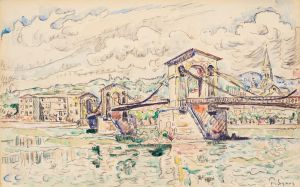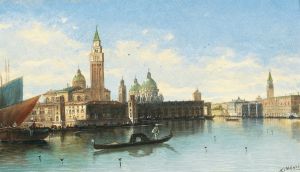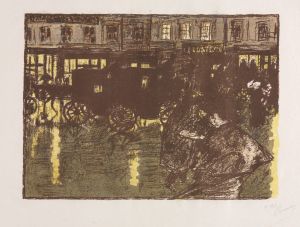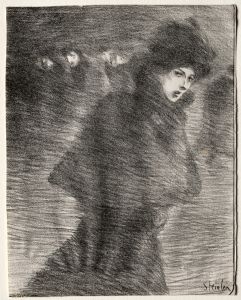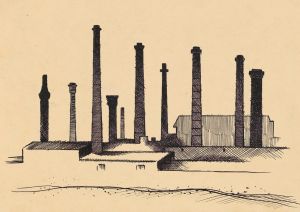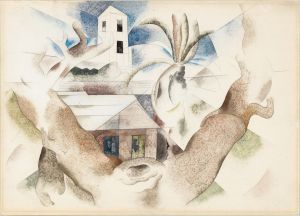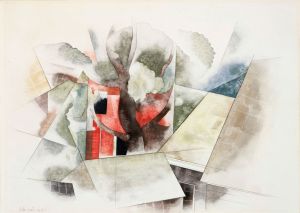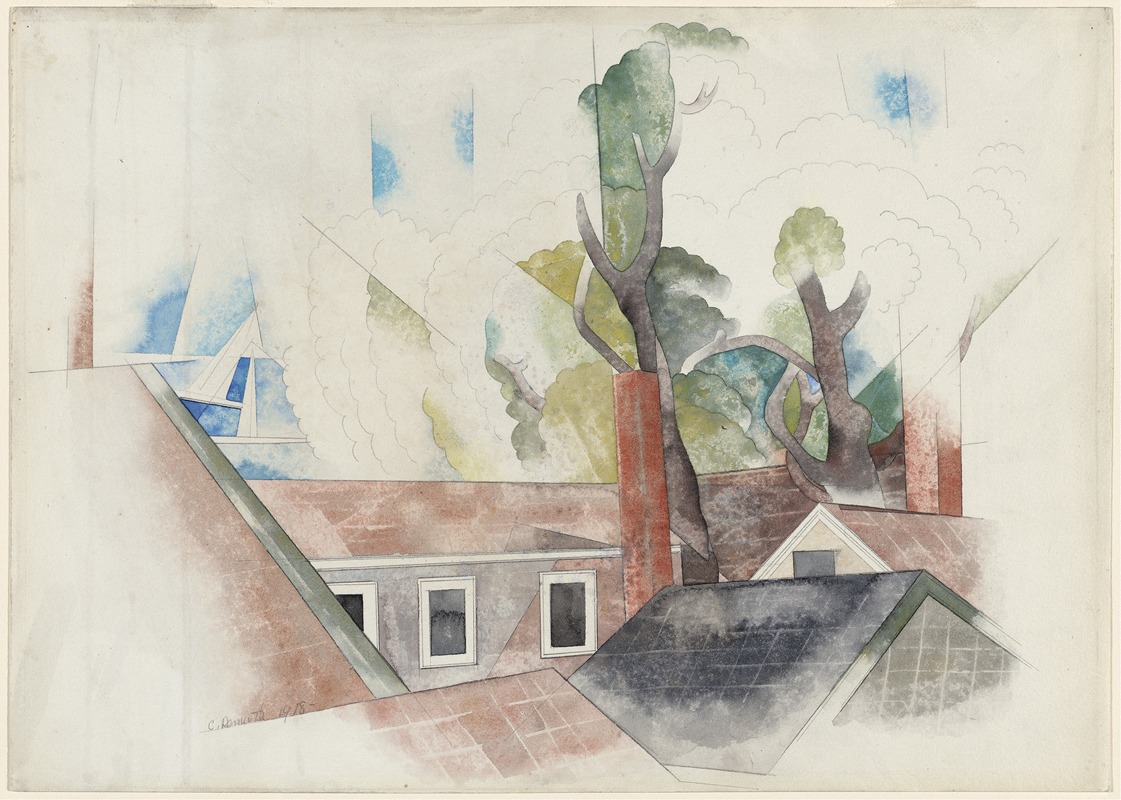
Rooftops and Trees
A hand-painted replica of Charles Demuth’s masterpiece Rooftops and Trees, meticulously crafted by professional artists to capture the true essence of the original. Each piece is created with museum-quality canvas and rare mineral pigments, carefully painted by experienced artists with delicate brushstrokes and rich, layered colors to perfectly recreate the texture of the original artwork. Unlike machine-printed reproductions, this hand-painted version brings the painting to life, infused with the artist’s emotions and skill in every stroke. Whether for personal collection or home decoration, it instantly elevates the artistic atmosphere of any space.
Charles Demuth was an American artist known for his contributions to the Precisionist movement, a style that emerged in the early 20th century characterized by its focus on industrial and architectural subjects, often with a sharp, linear quality. One of his works, "Rooftops and Trees," exemplifies his unique approach to capturing the American landscape through this lens.
"Rooftops and Trees" is a watercolor painting, a medium Demuth frequently employed, which allowed him to explore the interplay of light, color, and form with a certain fluidity and transparency. This piece, like many of his works, reflects his interest in the urban environment and the geometric shapes found within it. The painting depicts a scene that combines elements of nature with the built environment, a common theme in Demuth's work that highlights the coexistence and contrast between the organic and the man-made.
Demuth's Precisionist style is evident in the way he renders the rooftops with clean lines and defined shapes, creating a sense of order and structure. The trees, while more organic in form, are also depicted with a certain stylization that complements the architectural elements. This balance between nature and architecture is a recurring motif in Demuth's oeuvre, reflecting the changing American landscape during the early 20th century, a time of rapid industrialization and urbanization.
The painting's composition is carefully constructed, with an emphasis on the geometric arrangement of forms. Demuth often drew inspiration from his surroundings in Lancaster, Pennsylvania, where he spent much of his life. The town's architecture and landscape provided a rich source of material for his explorations of form and color. In "Rooftops and Trees," the juxtaposition of natural and architectural elements may reflect the artist's observations of his hometown, capturing the essence of a place where nature and human development intersect.
Demuth's use of watercolor in "Rooftops and Trees" is particularly noteworthy. Watercolor allowed him to achieve a luminosity and delicacy that enhanced the visual impact of his precise lines and forms. The medium's inherent transparency enabled him to layer colors subtly, creating depth and dimension within the composition. This technique also allowed for a certain spontaneity and expressiveness, balancing the precision of his lines with the fluidity of the watercolor.
Charles Demuth's work, including "Rooftops and Trees," has been influential in the development of American modernism. His ability to blend elements of realism with abstraction paved the way for future artists to explore new ways of seeing and representing the world. While Demuth is often associated with the Precisionist movement, his work transcends simple categorization, reflecting a deep engagement with the visual and cultural changes of his time.
"Rooftops and Trees" remains an important example of Demuth's artistic vision, showcasing his skill in capturing the essence of the American landscape through a modernist lens. The painting continues to be appreciated for its aesthetic qualities and its reflection of a pivotal moment in American art history.






